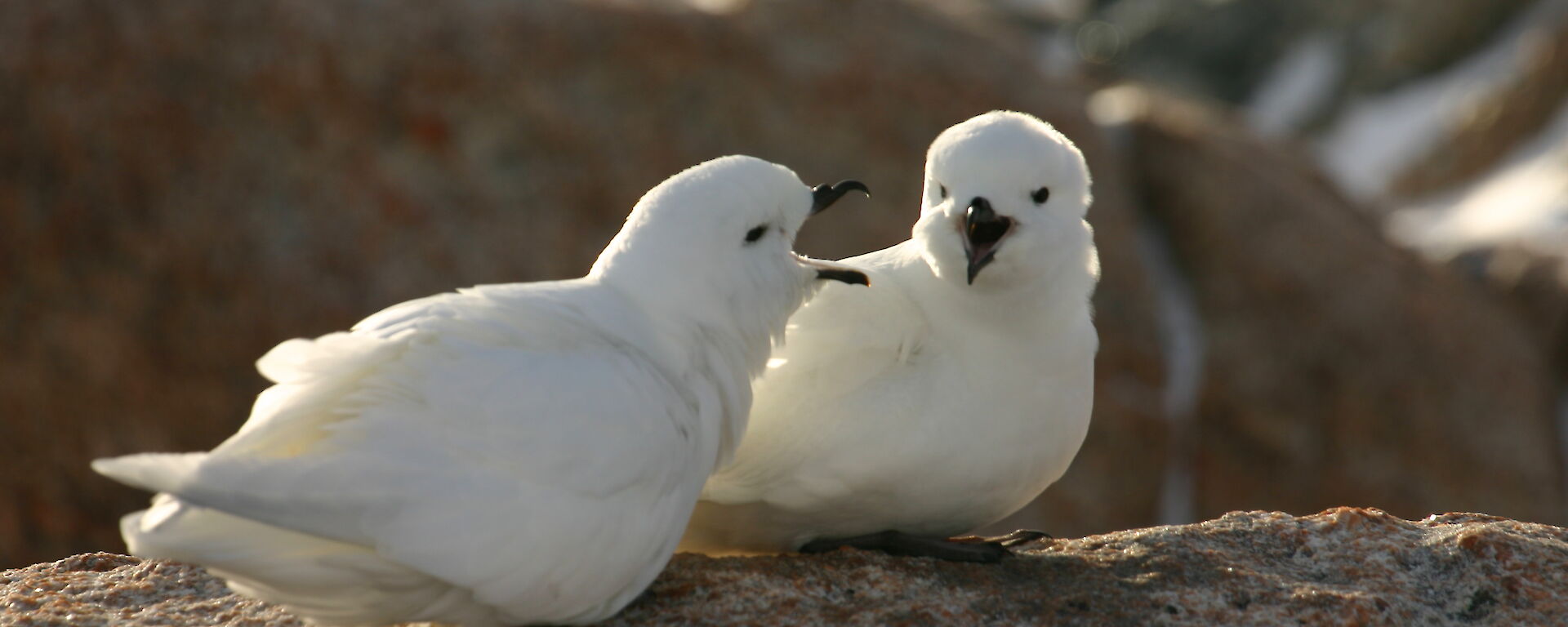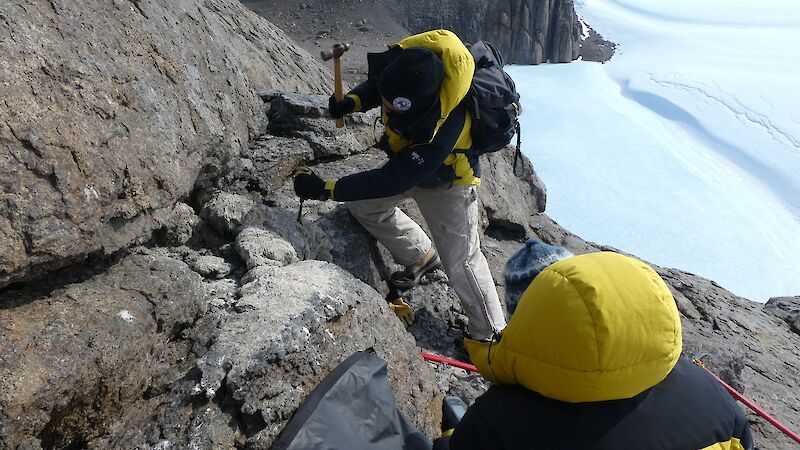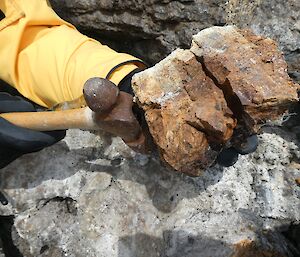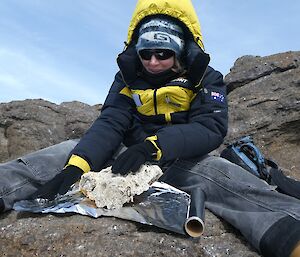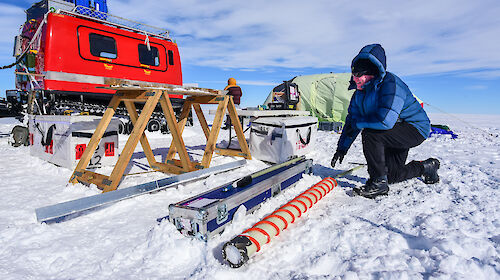Fossilised layers of spit, or ‘mumijo’, at snow petrel breeding sites, are helping seabird scientists understand how long the birds have inhabited sites in East Antarctica.
The waxy, regurgitated stomach oil accumulates on rocks near their nests, forming up to 20 centimetre thick deposits, which can be chiselled off and taken back to the laboratory for radiocarbon (14C) dating.
The research, led by Dr Sonja Berg of the University of Koln, Germany, and involving Australian Antarctic Division seabird ecologist, Dr Louise Emmerson, will provide a more comprehensive dating of snow petrel mumijo deposits in the region.
“Previous work has shown that some mumijo layers go back thousands of years,” Dr Emmerson said.
“Because snow petrels only nest in ice-free areas, we can date these layers to work out how long it took for the snow petrels to occupy the landscape after it had been deglaciated.
“As the birds usually nest within about one day’s flight from feeding grounds, the mumijo also provides information on changes in the coastal food web and sea-ice conditions over geological time.”
Field biologists Marcus Salton and Dr Anna Lashko are currently collecting mumijo samples from rocks outside snow petrel nests in the Masson Range near Mawson research station.
The samples are being collected over summer while the birds are out foraging at sea, to prevent disturbance when they return to lay their eggs.
Mr Salton said the mumijo is so hard it has to be chipped off with a hammer and chisel.
“The spit gets a lot of bird foot traffic and is exposed to high winds, so it gets amalgamated with bird poo, dirt and grit, and becomes very hard,” he said.
“Once we’ve collected a sample we wrap it in kitchen foil and store it in a freezer on station, before returning it to Australia.”
A team at Casey research station is also searching for mumijo as part of a broader study looking at the movement and changes in snow petrel populations over geological time scales, however they are yet to find layers of any substantial depth.
“The absence of thick mumijo layers may mean the birds haven’t been around for as long in this area of Antarctica, and this is consistent with recent genetics studies that suggest that the birds are likely to have moved in from the Davis and Mawson populations,” Dr Emmerson said.
“We’ll continue looking for deep layers over summer — maybe we just haven’t looked in the right spot yet.”

